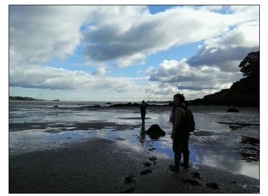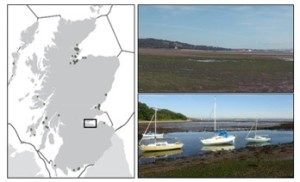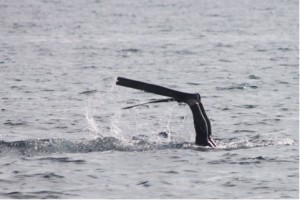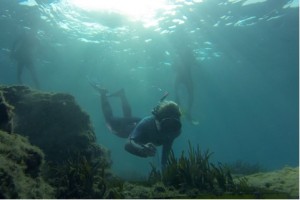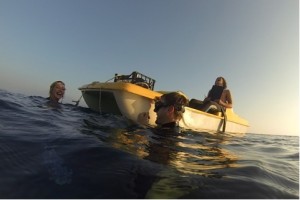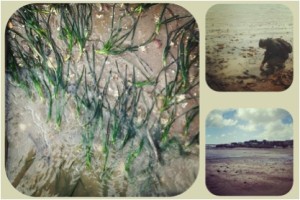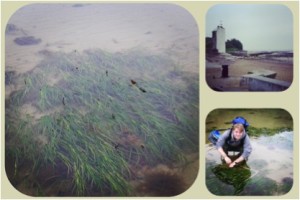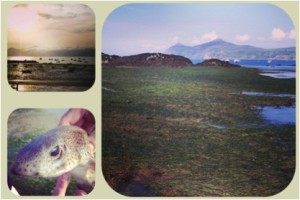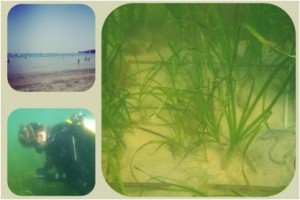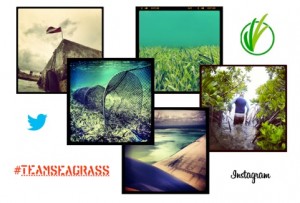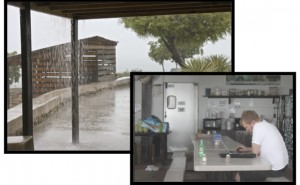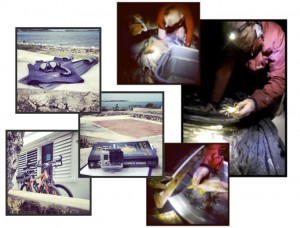Every so often, we feature seagrass meadows from all over the world. This week, Maria Potouroglou writes about seagrass in Scotland. Maria is a PhD student at Edinburgh Napier University studying carbon sinks in seagrass. Her seagrass adventures started six years ago with projects in Greece, Spain and England.
——————————————————–
[Photos and text by Maria Potouroglou]
Hello Team,
My name is Maria and last February I started my PhD at Edinburgh Napier University looking at the role of seagrasses as coastal carbon sinks under the supervision of Prof Huxham, Dr Diele and Prof Kennedy. Many of you will wonder what a Greek does in Scotland, when seagrasses flourish in the Mediterranean! Well, UK has always been an exotic place to me, and moreover the most abundant meadows of the most widespread seagrass genus occur here, in Scotland.
Ecological fieldwork is sometimes fraught with so many obstacles that is hard to imagine why anyone would want to do it. The soft-sediment marine intertidal is one of those habitats that pose a special challenge to the species that live there and the scientists who try to study them. While the species have well adapted to the alternating physical conditions, scientists must fight the tides, which often occur too early or too late and are not sufficiently low (!!) and try to walk on the glue like sediment, which most of the times results to a cream-mud up to the knees, or fully covered waders when gravity prevails over stability.
Fieldwork is carried out at Forth Estuary which is located on the east coast of Scotland and contains approximately a quarter of the population of Scotland (~1.3 million people) and a significant proportion of its industry. The Forth estuary is a macrotidal coastal plain estuary, with extensive intertidal mudflats, where Z. noltii forms sparse beds. No dedicated Zostera survey has ever been carried out in the Firth of Forth, while in Scotland’s Marine Atlas of 2011, seagrass beds in the area were completely discarded. So, last May we established ten permanent plots, which we were monitoring biweekly by recording percentage coverage, number of shoots, length of leaves, number of flowers and any signs of disease. I am glad to say that we have a nice dataset of the growth season under our belt. Moreover, we attempted to develop an image analysis technique to actually calculate percentage coverage of the quadrats, instead of relying on our subjective visual estimations.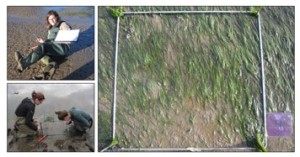 This technique was also used to map the seagrass meadows in the area. Finally, in late October we took a series of sediment cores, which are being analysed at the moment for total organic matter, organic carbon, and different sources and age of carbon.
This technique was also used to map the seagrass meadows in the area. Finally, in late October we took a series of sediment cores, which are being analysed at the moment for total organic matter, organic carbon, and different sources and age of carbon. Preliminary results have been already presented at a Pecha:Kucha Event (20 slides, 20 seconds per slide – and YES that is a challenge) in Edinburgh, whereas a more detailed talk about our study will be given at the final conference of the COST Action ES0906, “Seagrass productivity: from genes to ecosystem management”, which will be held on March in Portugal.
Preliminary results have been already presented at a Pecha:Kucha Event (20 slides, 20 seconds per slide – and YES that is a challenge) in Edinburgh, whereas a more detailed talk about our study will be given at the final conference of the COST Action ES0906, “Seagrass productivity: from genes to ecosystem management”, which will be held on March in Portugal.
Seagrass research in Scotland is up and running, so watch this space for more updates of our work.